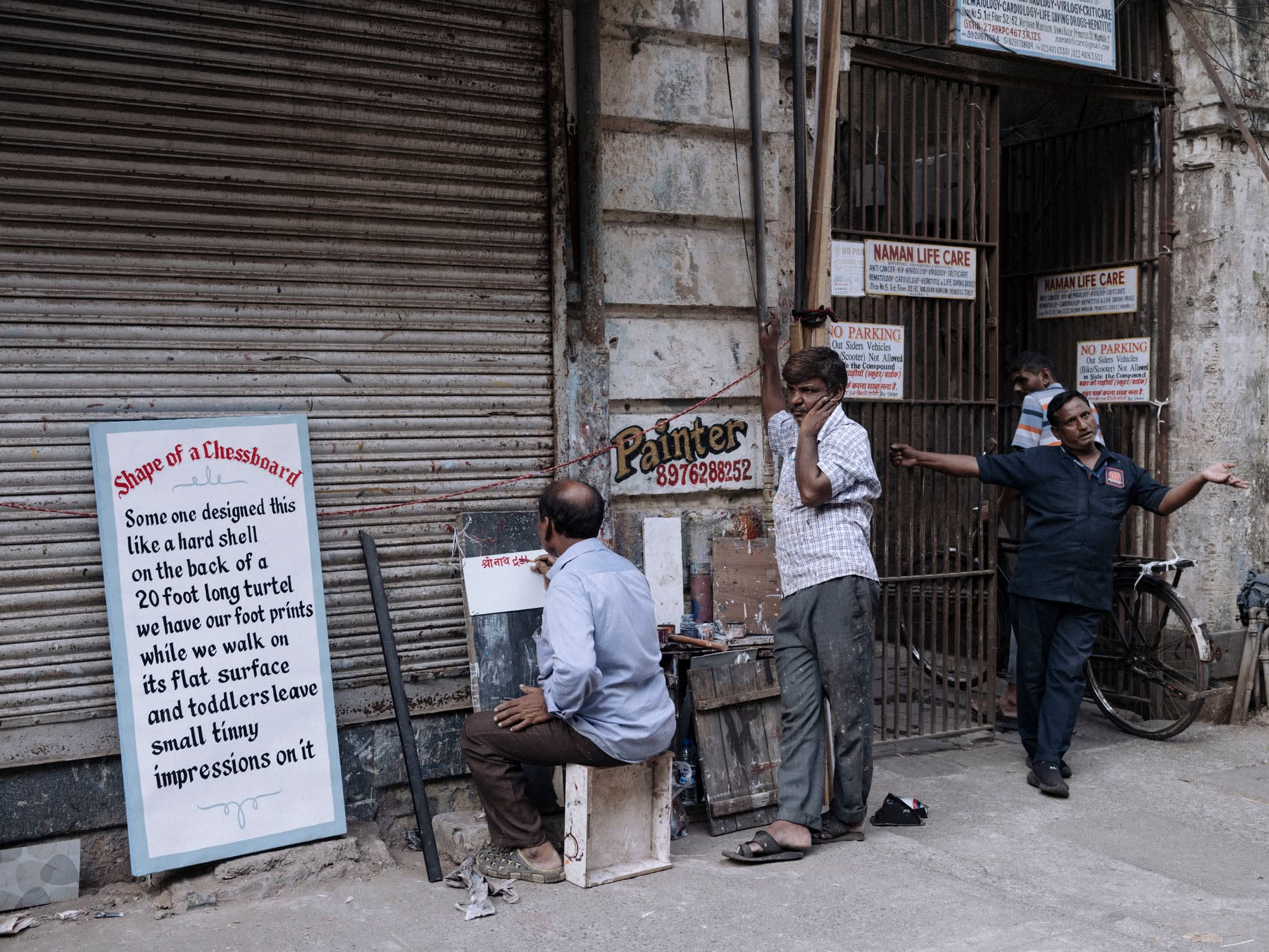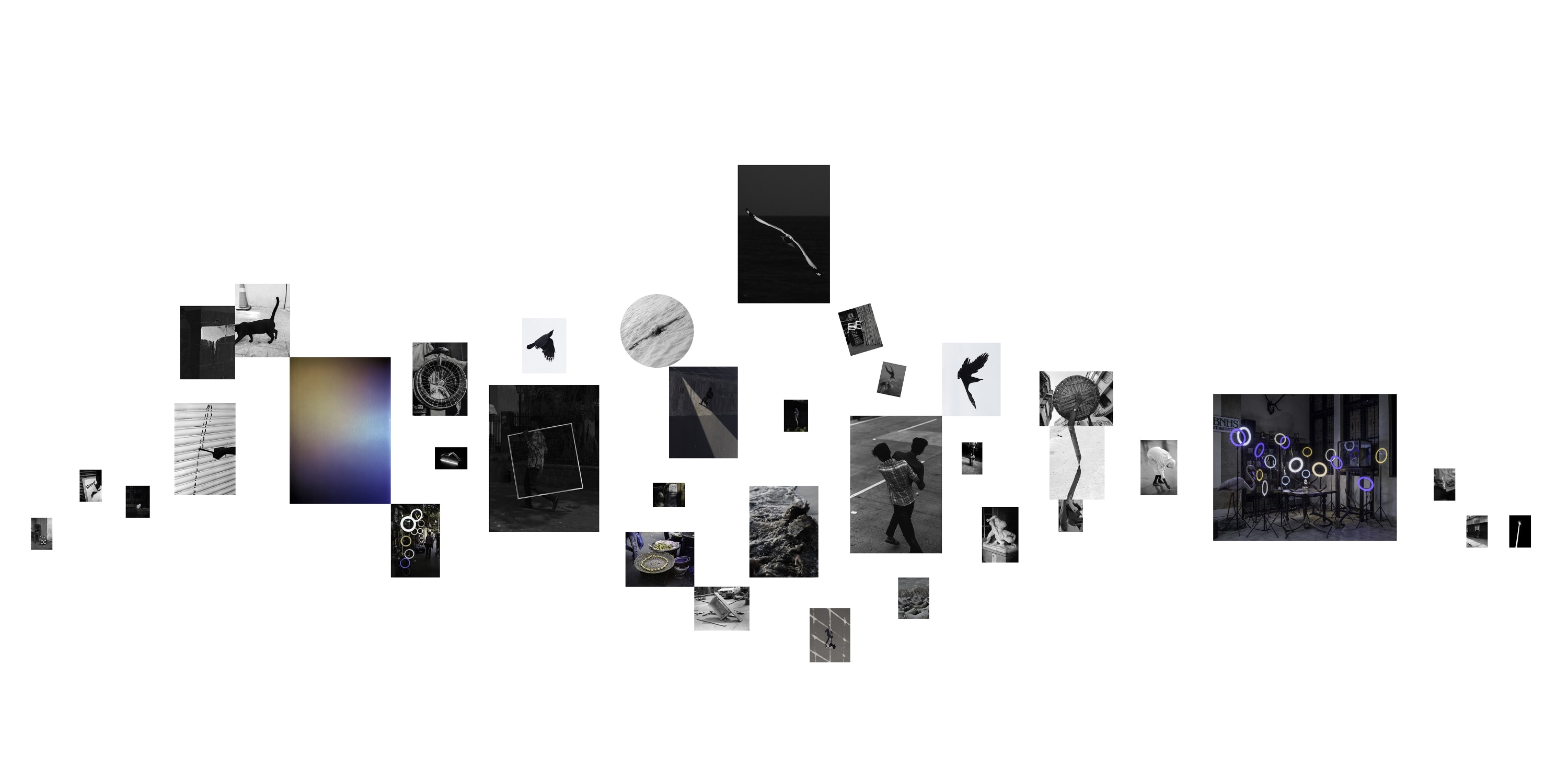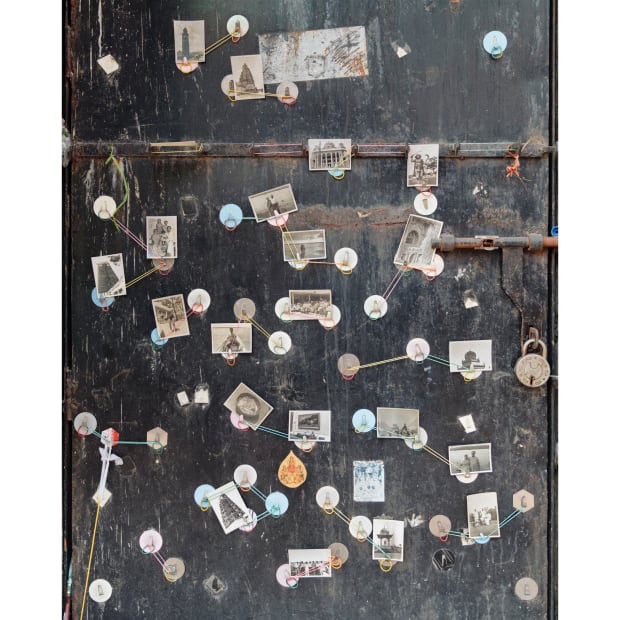-
-
In The Second Law, Philippe Calia uses photography, video and text to manifest his own reading of Bombay/Mumbai. The work stems from years of observations of the city’s visual grammar, seemingly aimless strolls in its streets, conversations with the people met along the way, but also encounters with numerous kinds of literature produced around it.
-

PHILIPPE CALIA, Time dilates while looking at the checkerboard of Nana Chowk, 2025
-
One decisive encounter was of Arun Kolatkar’s alchemy of the ordinary in his Kala Ghoda Poems. The transmutation, through poetry, of debris into “fresh new series of installations” coloured Calia’s perception of the city since then. For the artist, photography is often a means to take notes of found sculptures and other “readymades”.
-
Yet, through spontaneous, playful, sometimes collaborative, interventions in the street, Calia also devises his own ephemeral “installations”, which the camera helps in crystallising.
-
The series is punctuated by elaborately staged scenes, shot inside historical buildings, as if a photographic negative of the street. Pursuing this whole personification of a city, Calia gives us a peek into Mumbai’s subconscious, proposing to us, to imagine with him what its dreams could look like. With The Second Law, the artist then invites the viewer to (re)trace their journey into one such dream.
-
Following the tradition of in situ art, the exhibition is conceived in response to the gallery’s space as well as to its location, with a title hinting at a neighbourhood surrounded by courts, dotted with lawyers and other legal paraphernalia.
-

philippe calia, A Ninety Minutes Monument for Maya Nagari, 2024
-
Philippe Calia (b.1985, Paris) is a French-born India-based visual artist. His work has received several awards and has been exhibited in various museums, galleries and festivals across Europe and Asia, including Serendipity Arts Festival (India, 2025); Jimei x Arles (China, 2024); Les Rencontres d’Arles (France, 2023); Kunstmuseum Wolfsburg (Germany, 2023); SIPF (Singapore, 2022) and UP Gallery (Taïwan, 2021).
Working primarily with photography, video and text, Calia uses a conceptual approach to engage with notions of time and memory, often traversing dialectics between the personal and the collective, poetics and politics. Influenced by a dual training in photography and social sciences, he finds his inspiration in the everyday, putting it in perspective with an eclectic array of disciplines and references, from modern literature and anthropology to geology or theoretical physics.
Rather than seeking a particular style, Calia works with images of various kinds and focuses on their thresholds: between found and constructed, figuration and abstraction, moving and still. Nonetheless the making and presentation of these images in space is always crucial, allowing him to explore the situational dimensions of authorship and viewership. Experimenting with the form, language and temporality of the photographic medium in particular also enables him to produce layered images—which in return prods the question of photography as an apparatus essentially based on accumulation and extraction. Through the prism of various institutions (the archive, the library, the museum), technologies (the album, the digital cloud) or terrains (the city), Calia thus engages with various contemporary practices of image-making and memory-keeping. He sheds light on their discourses and economies, as well as the modes of preservation, perception and commemoration which they attempt to establish.
Since 2013, Calia has been collaborating as a photo editor with PIX, a platform for contemporary photography in South Asia. Between 2015 and 2020, he co-directed BIND, a platform for photobooks in India with a public library based in Mumbai.
His work is part of the public collection of the Centre national des arts plastiques (CNAP), Paris, as well as several other private collections.
The Second Law: Philippe Calia
Past viewing_room











